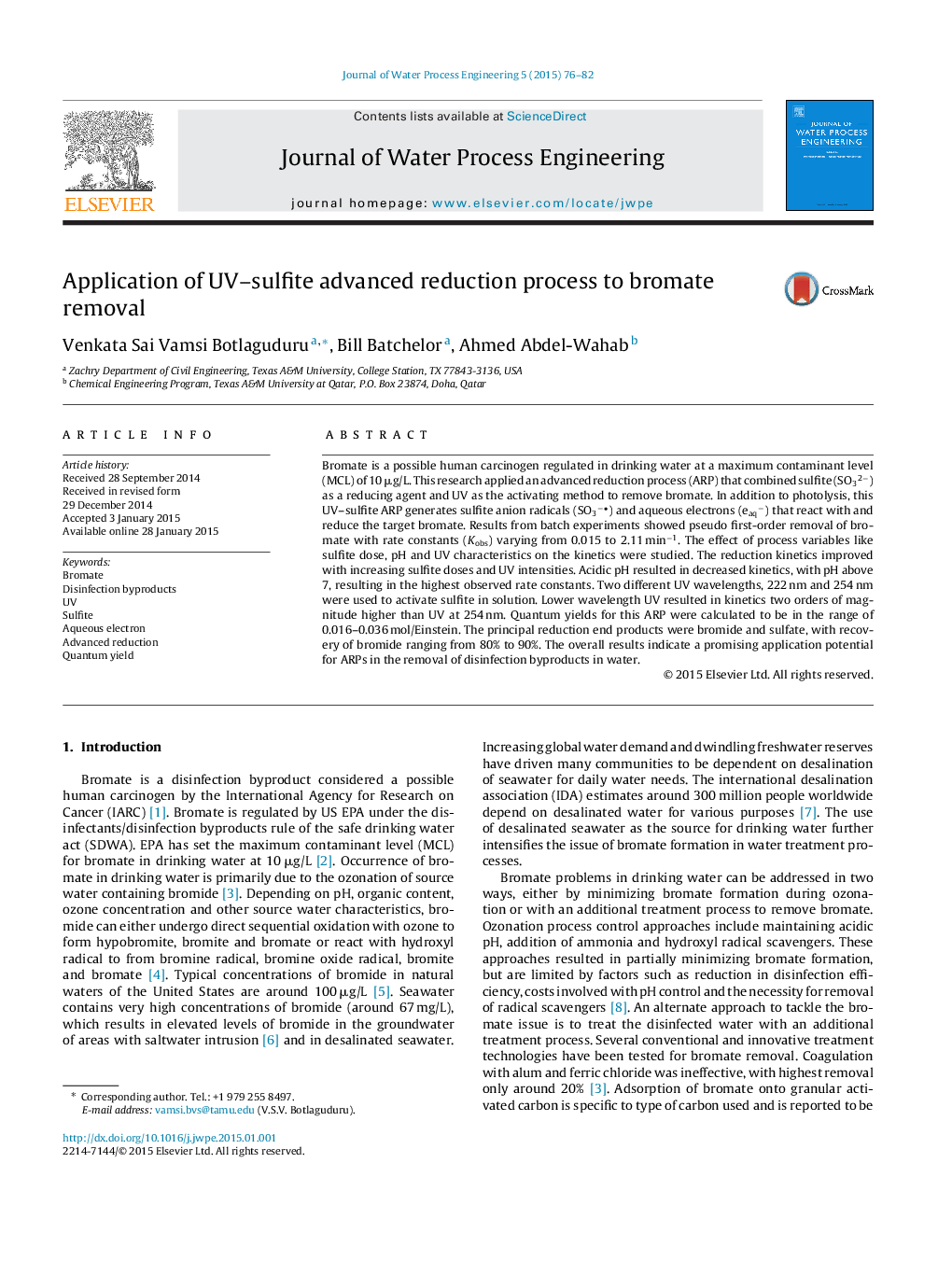| Article ID | Journal | Published Year | Pages | File Type |
|---|---|---|---|---|
| 232677 | Journal of Water Process Engineering | 2015 | 7 Pages |
•Bromate removal kinetics affected by pH, sulfite dose, UV wavelength and intensity.•Quantum yield of the advanced reduction process varies with pH and UV wavelength.•Low wavelength excimer UV lamp significantly increases the kinetics of bromate removal.
Bromate is a possible human carcinogen regulated in drinking water at a maximum contaminant level (MCL) of 10 μg/L. This research applied an advanced reduction process (ARP) that combined sulfite (SO32−) as a reducing agent and UV as the activating method to remove bromate. In addition to photolysis, this UV–sulfite ARP generates sulfite anion radicals (SO3−) and aqueous electrons (eaq−) that react with and reduce the target bromate. Results from batch experiments showed pseudo first-order removal of bromate with rate constants (Kobs) varying from 0.015 to 2.11 min−1. The effect of process variables like sulfite dose, pH and UV characteristics on the kinetics were studied. The reduction kinetics improved with increasing sulfite doses and UV intensities. Acidic pH resulted in decreased kinetics, with pH above 7, resulting in the highest observed rate constants. Two different UV wavelengths, 222 nm and 254 nm were used to activate sulfite in solution. Lower wavelength UV resulted in kinetics two orders of magnitude higher than UV at 254 nm. Quantum yields for this ARP were calculated to be in the range of 0.016–0.036 mol/Einstein. The principal reduction end products were bromide and sulfate, with recovery of bromide ranging from 80% to 90%. The overall results indicate a promising application potential for ARPs in the removal of disinfection byproducts in water.
